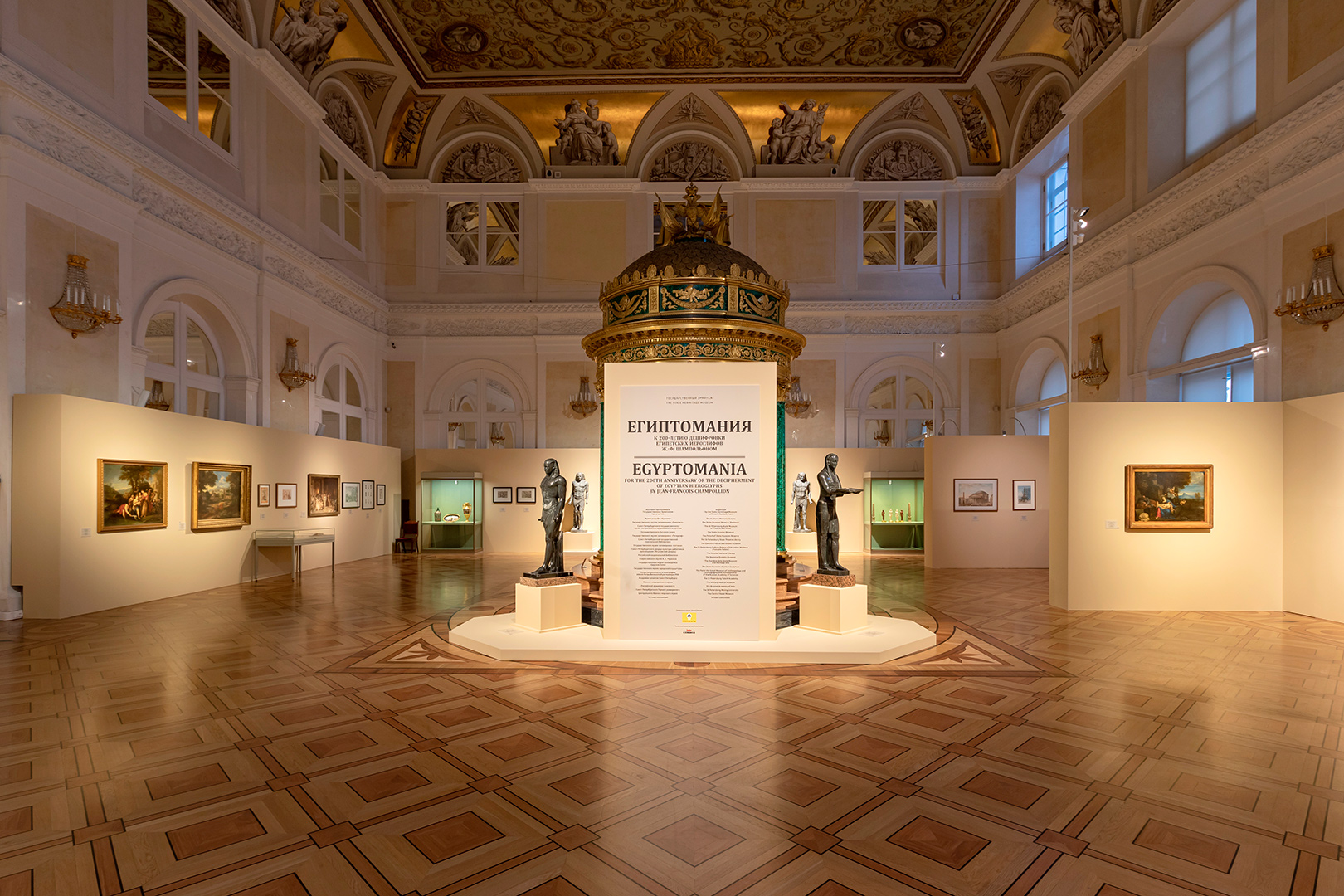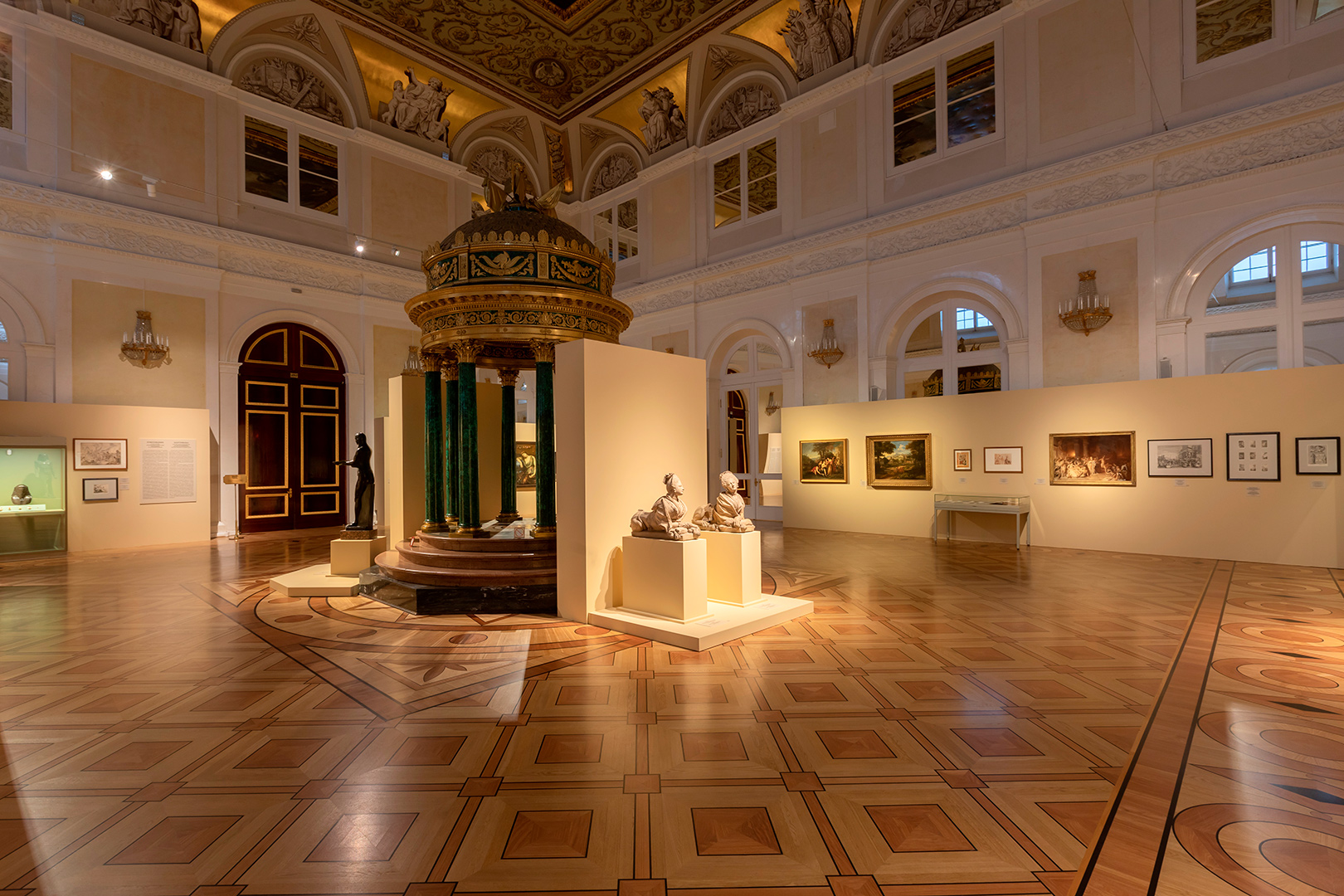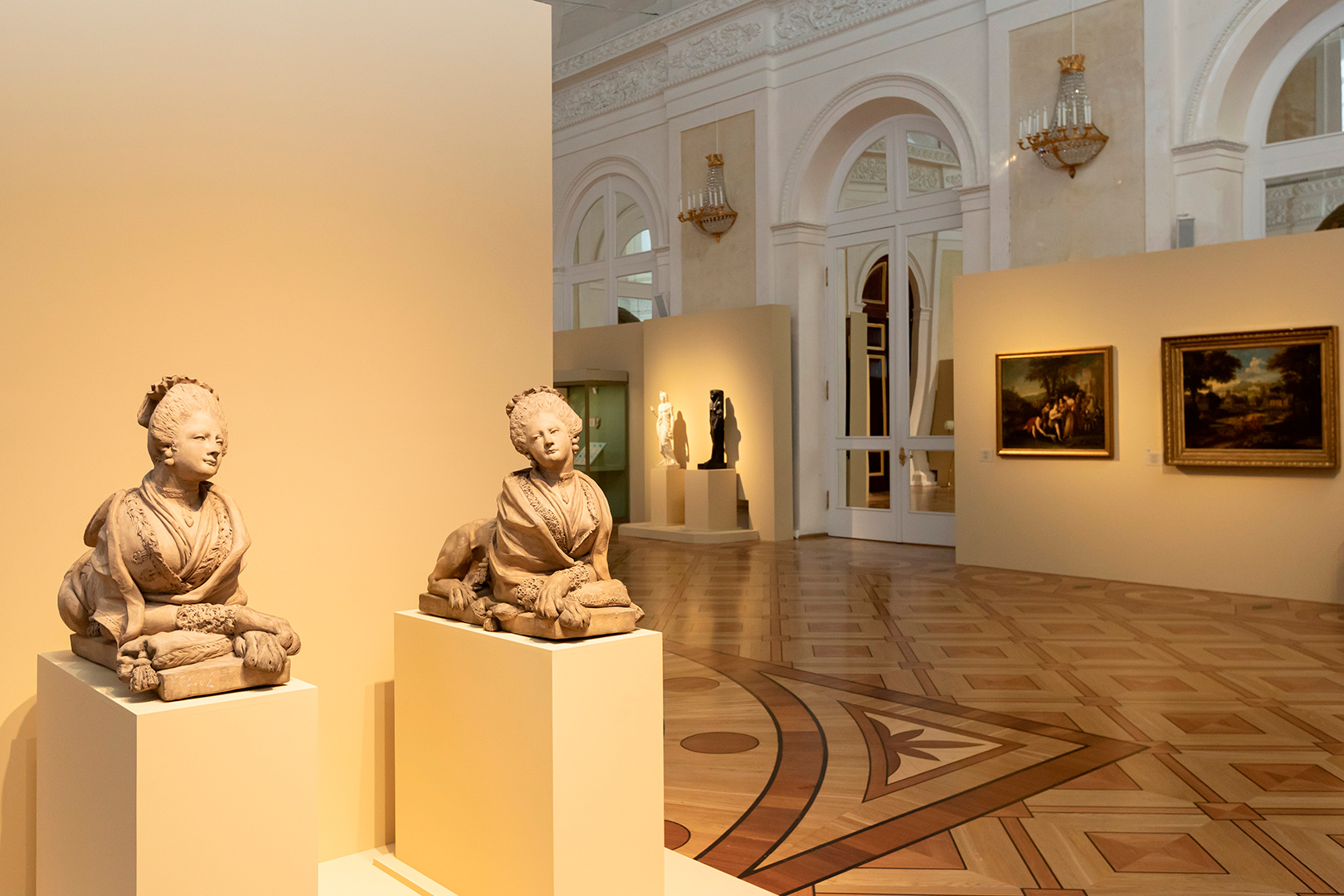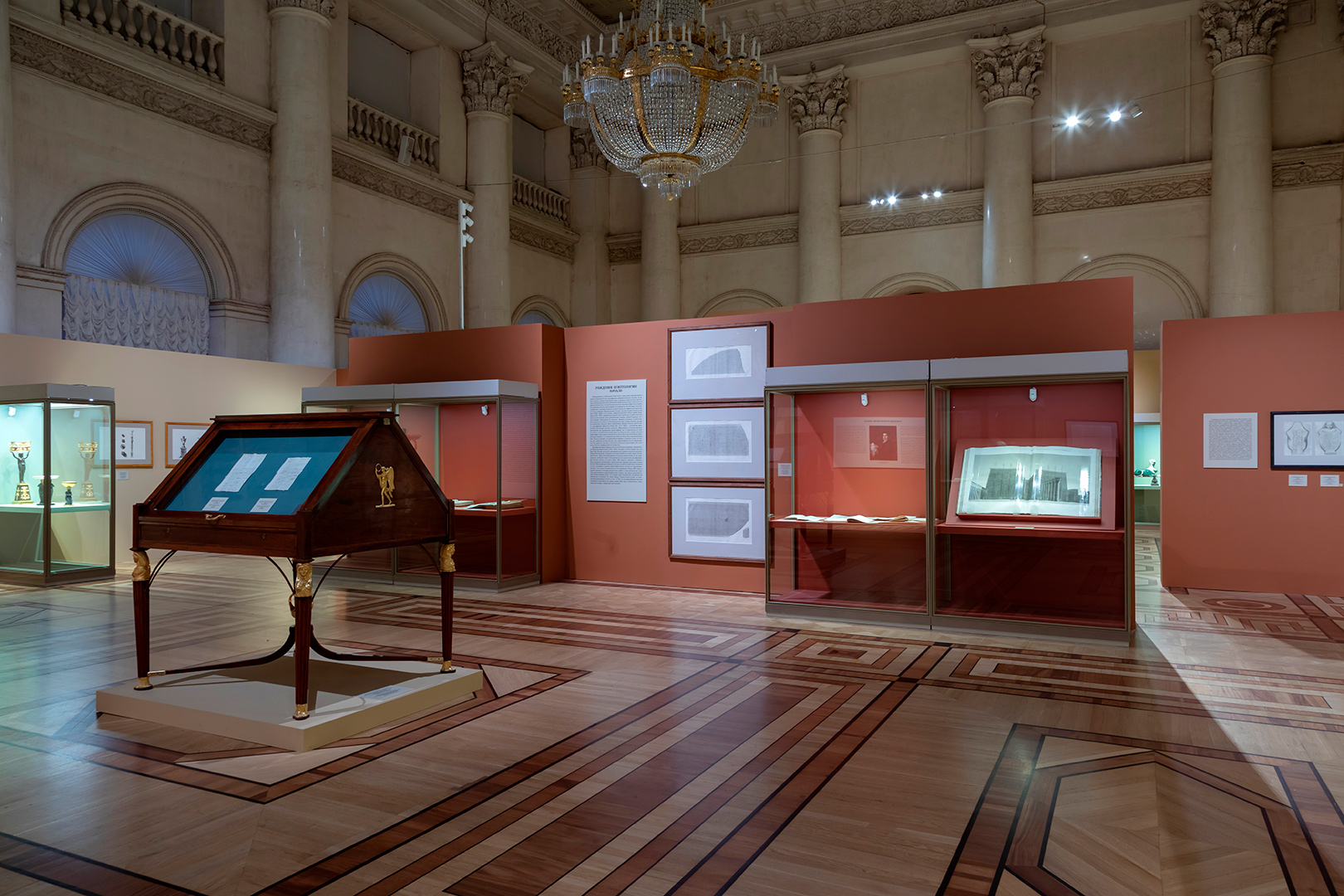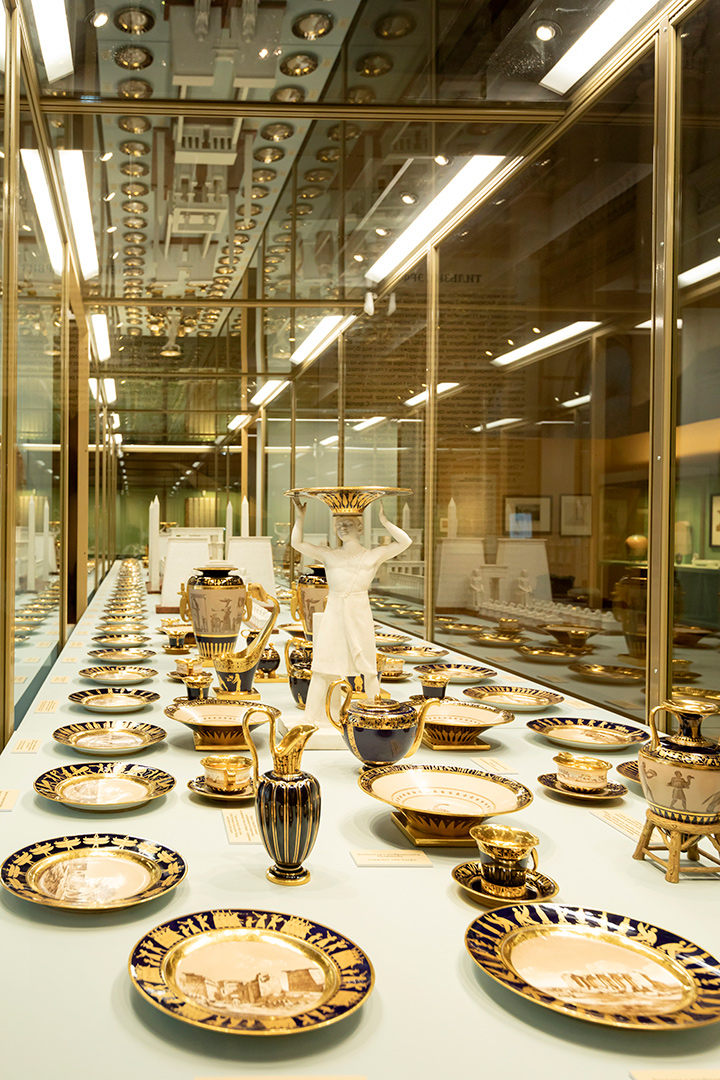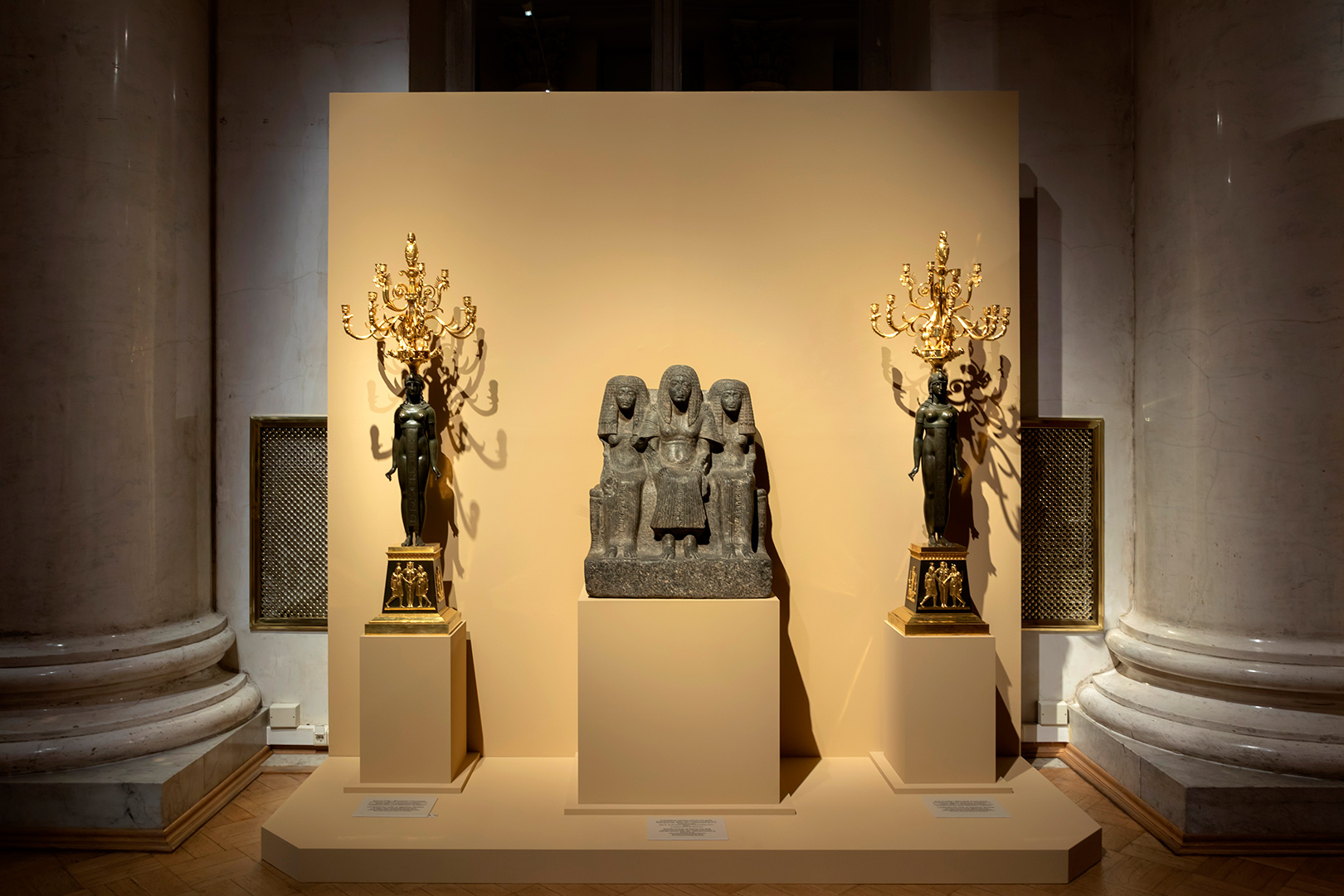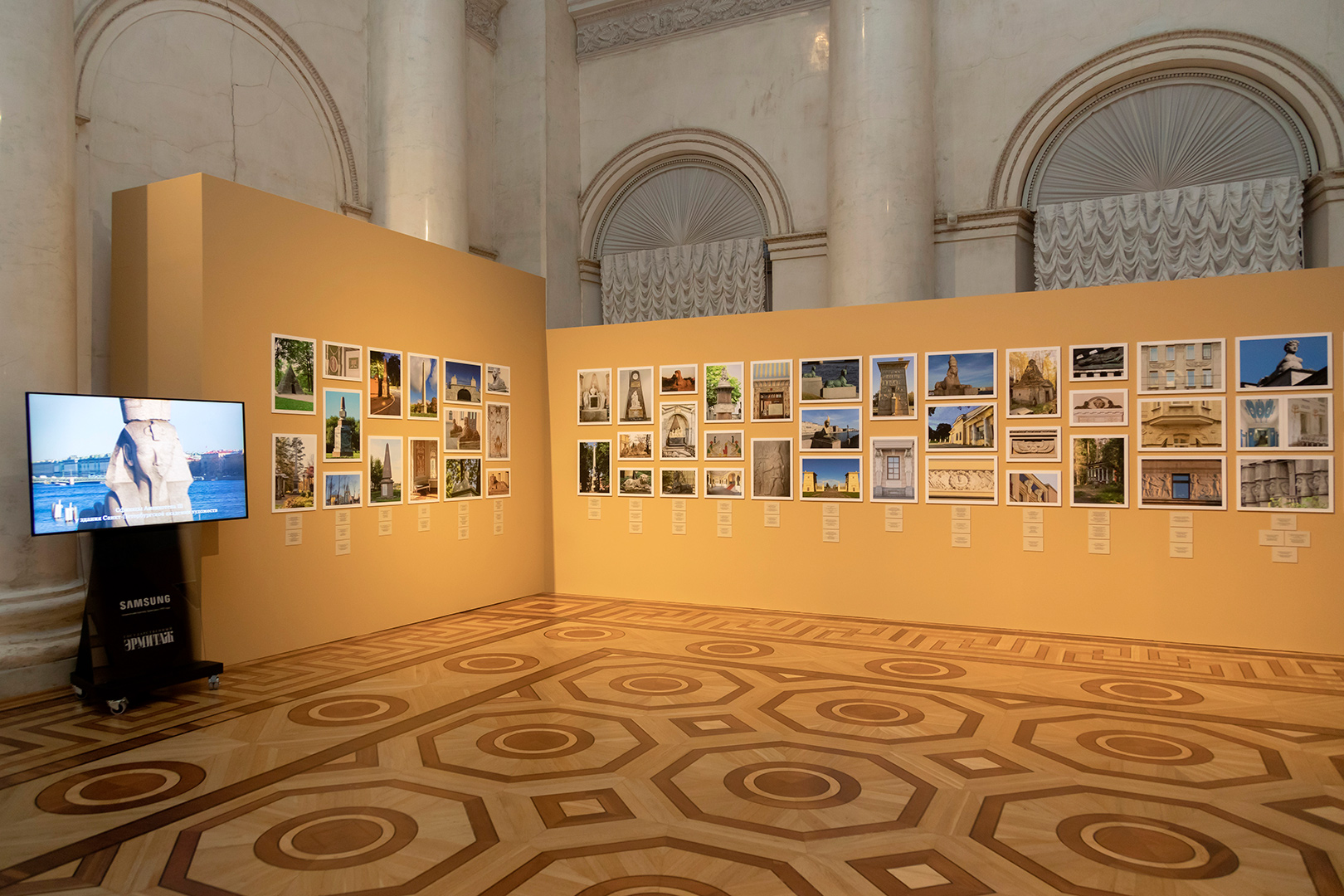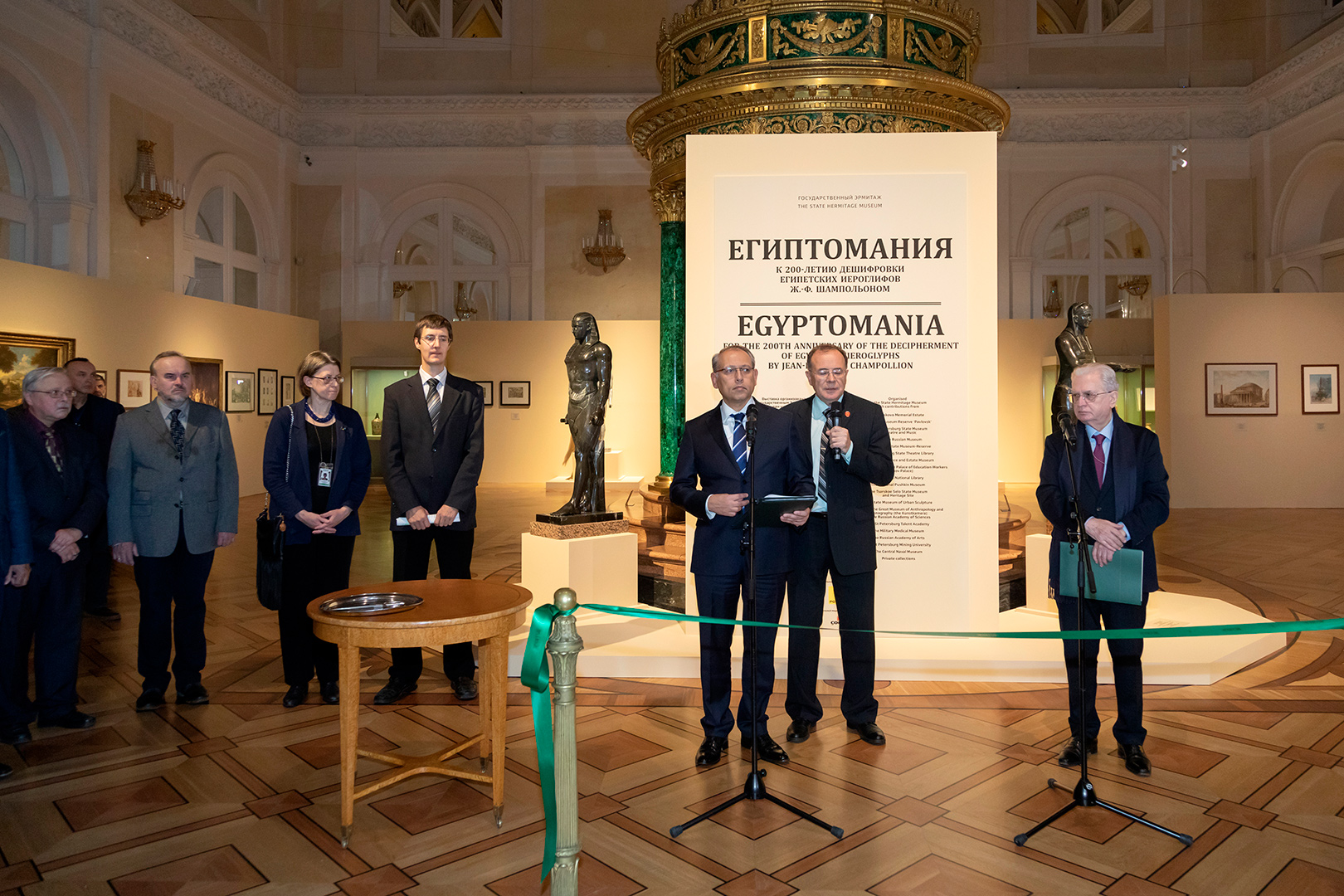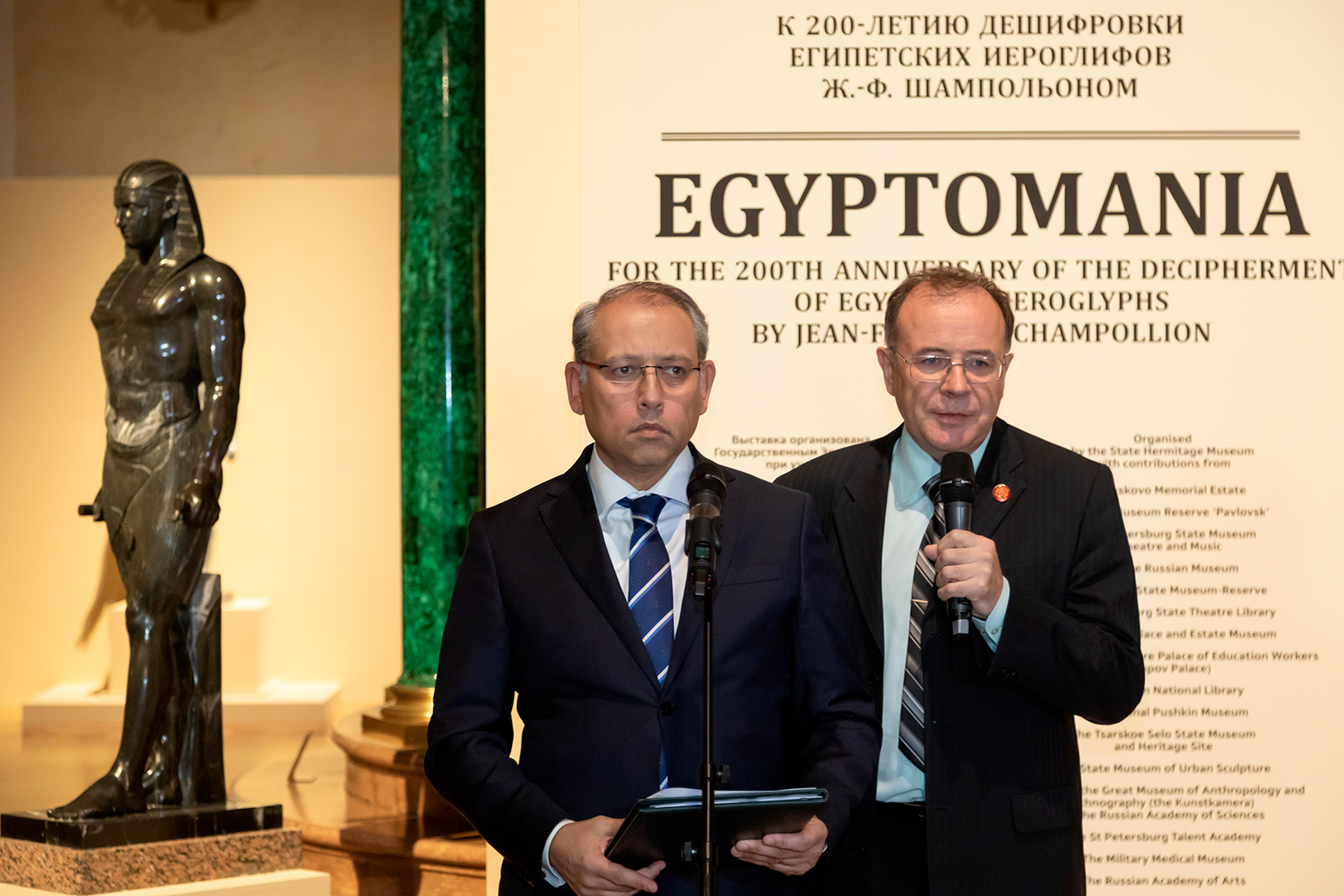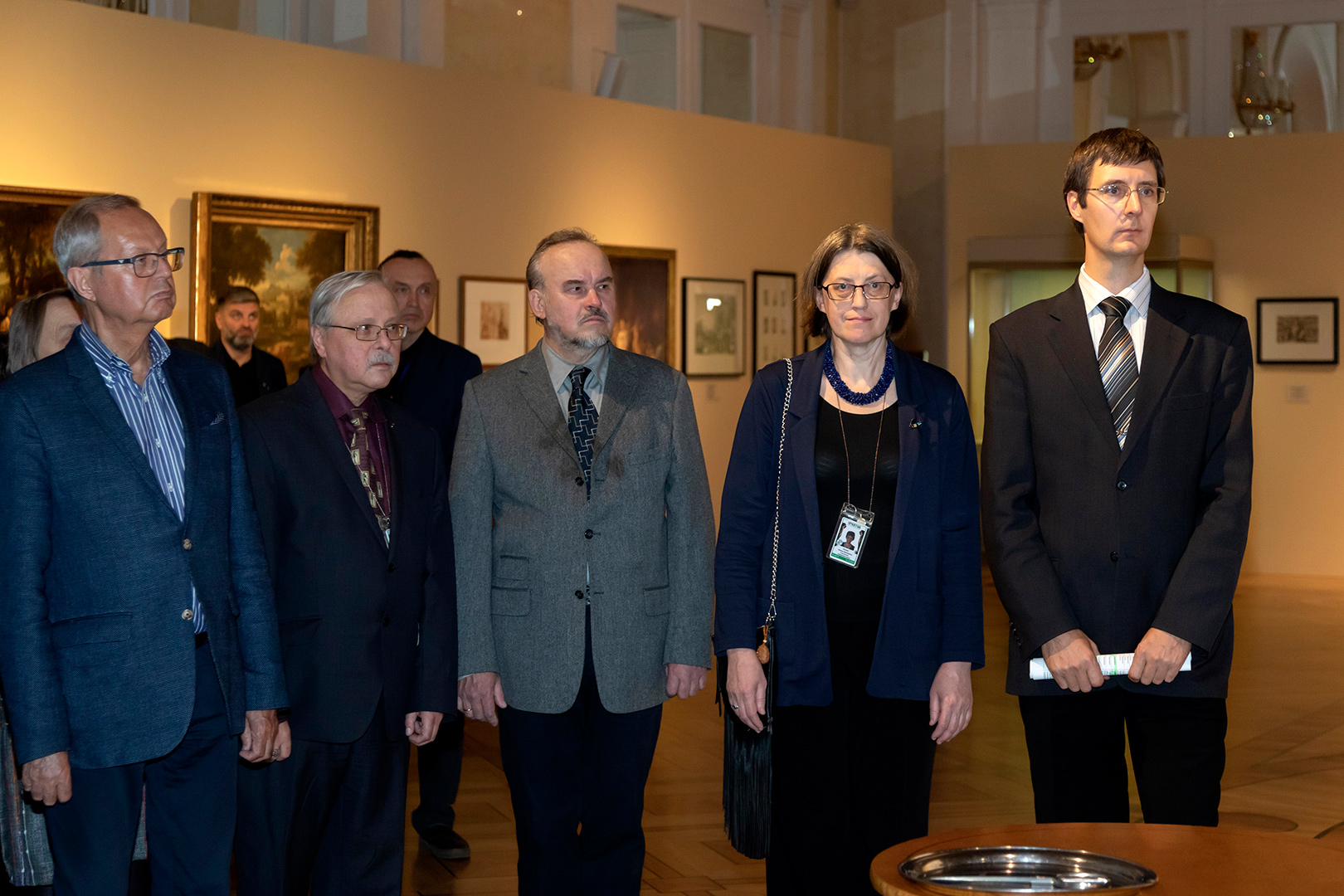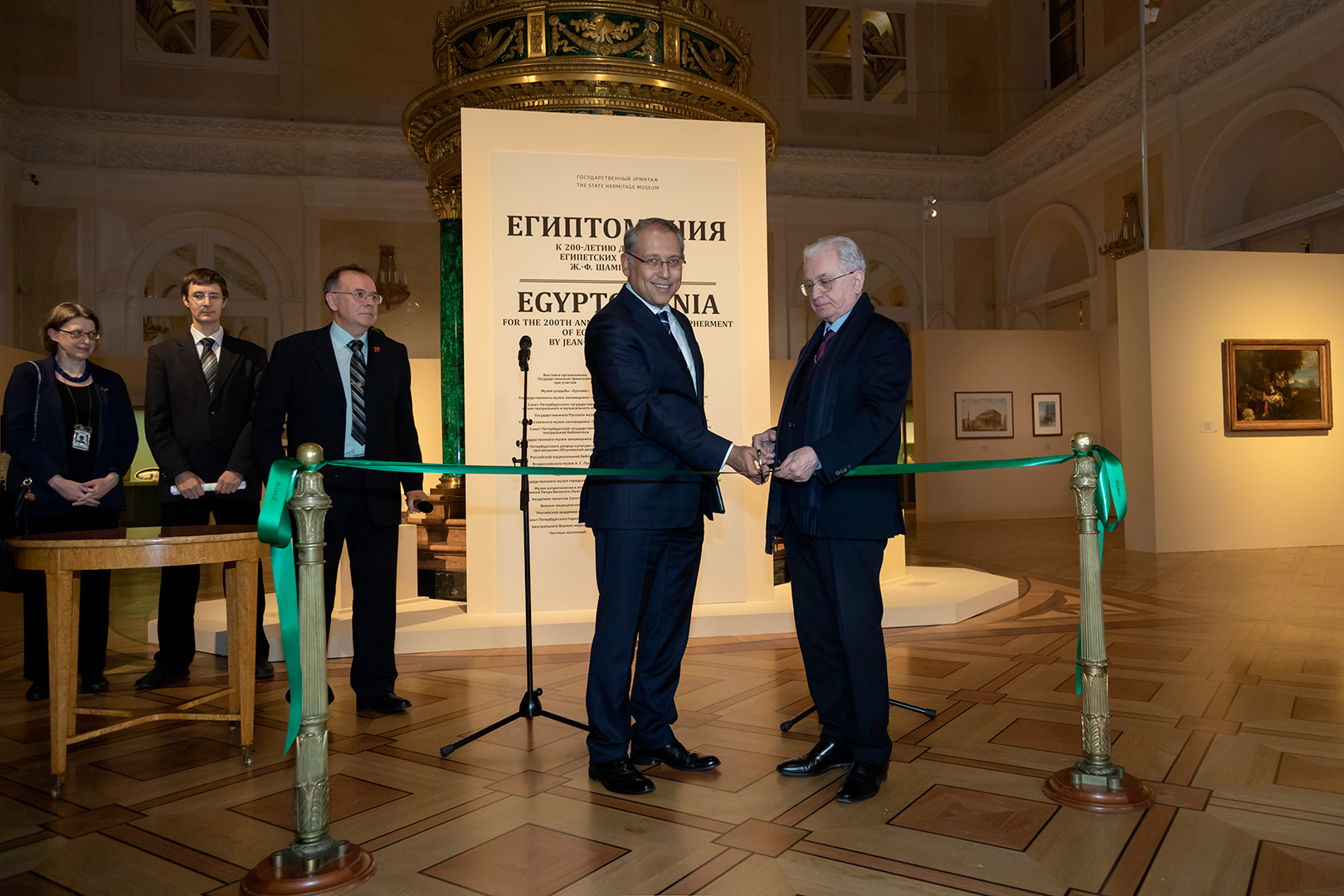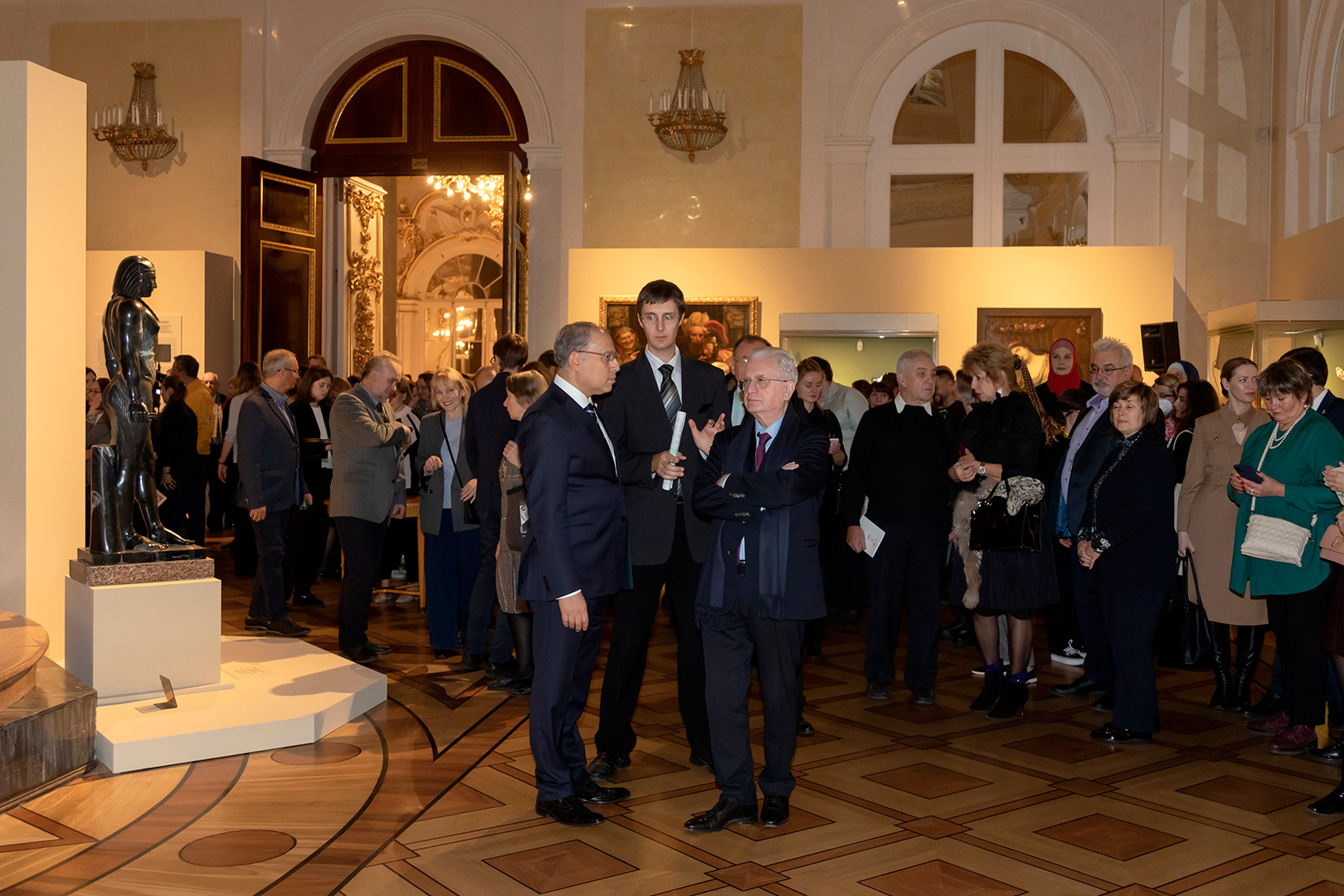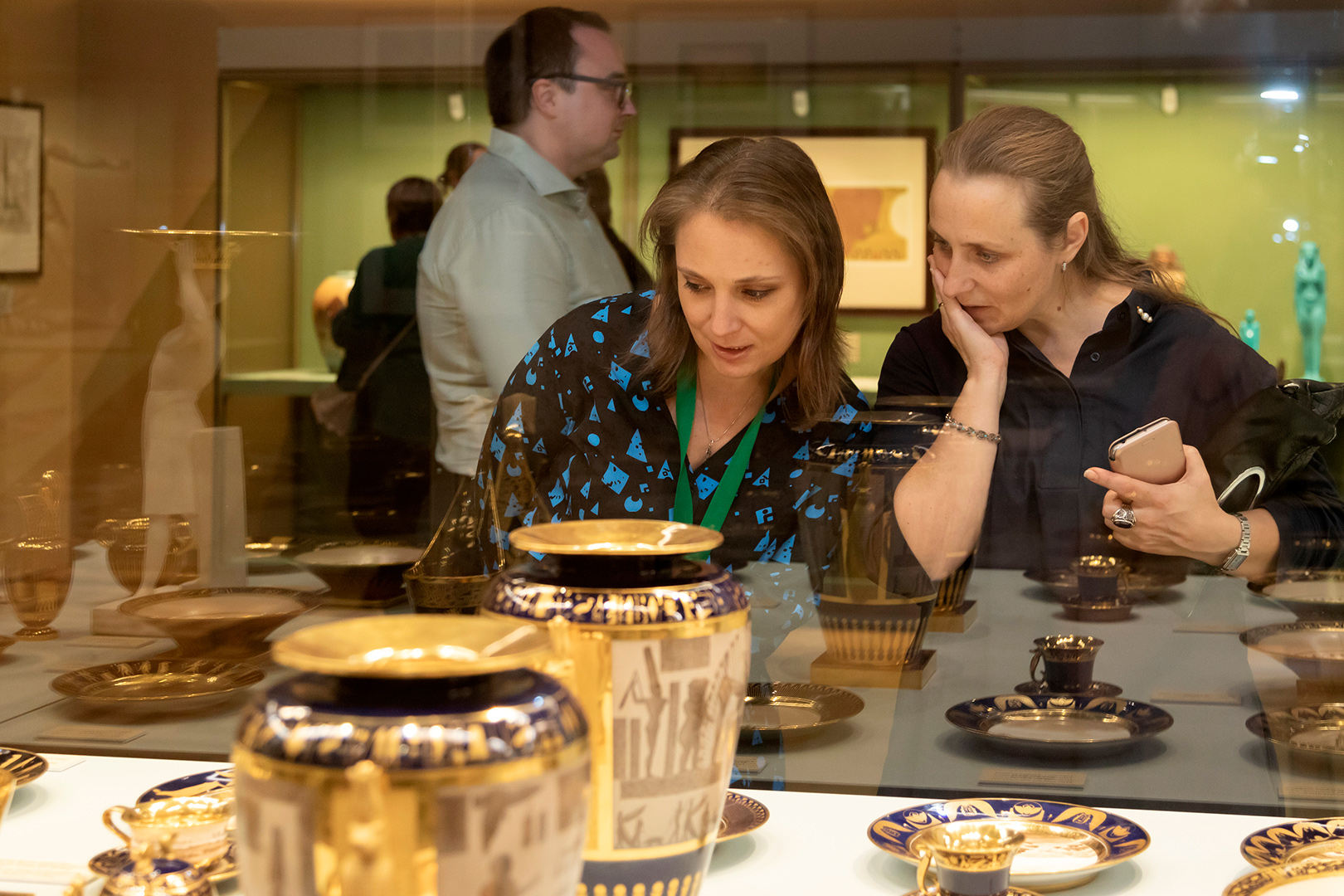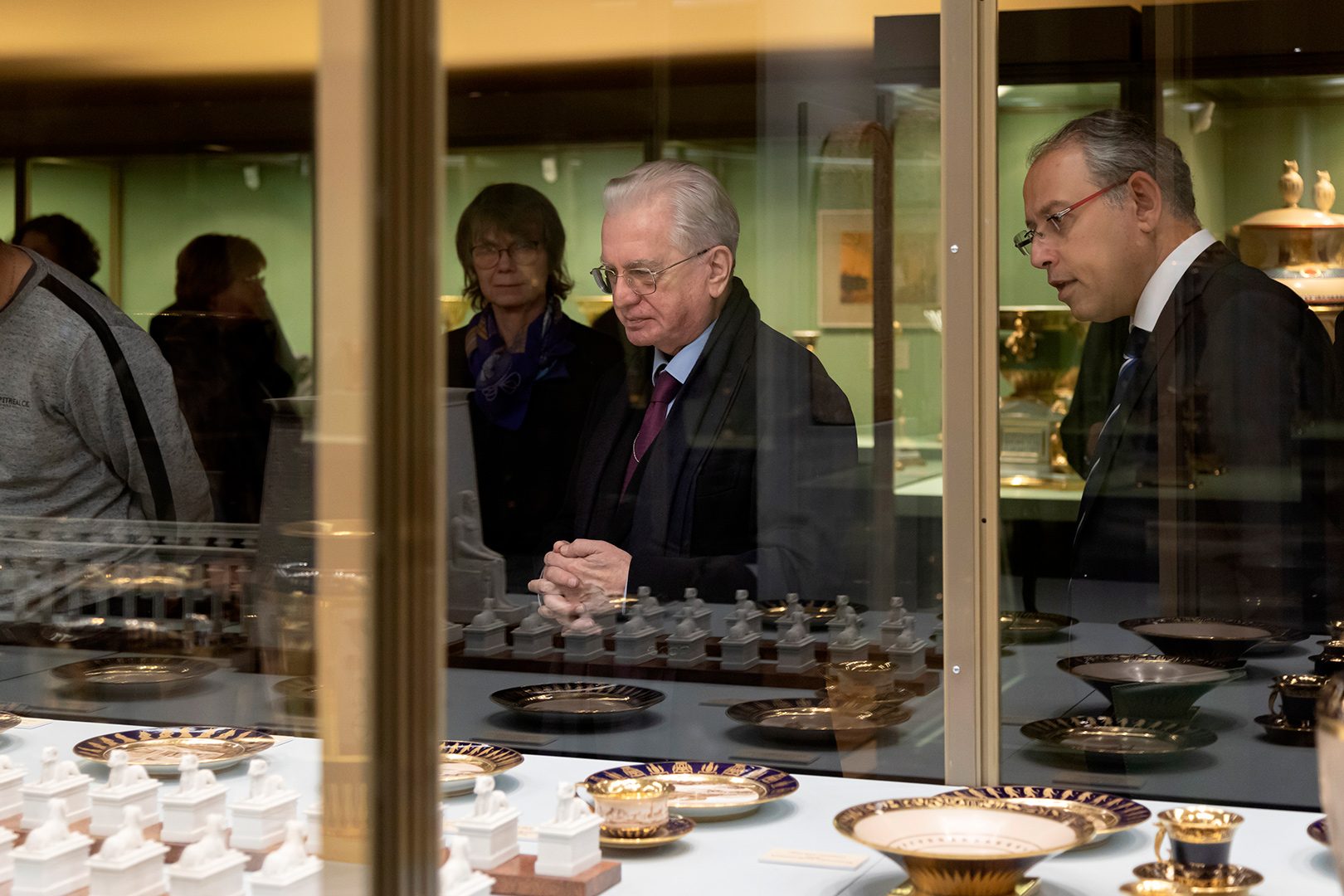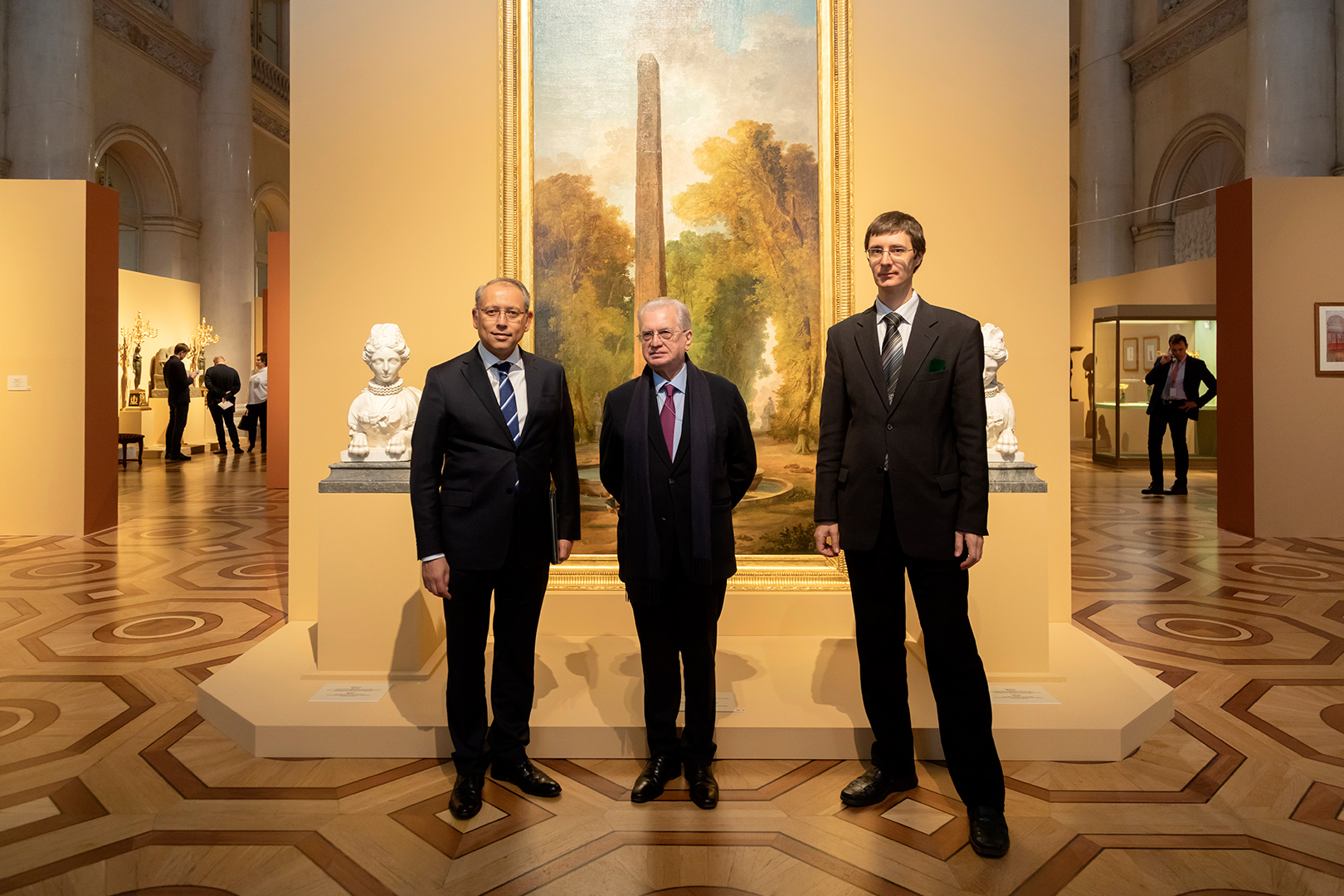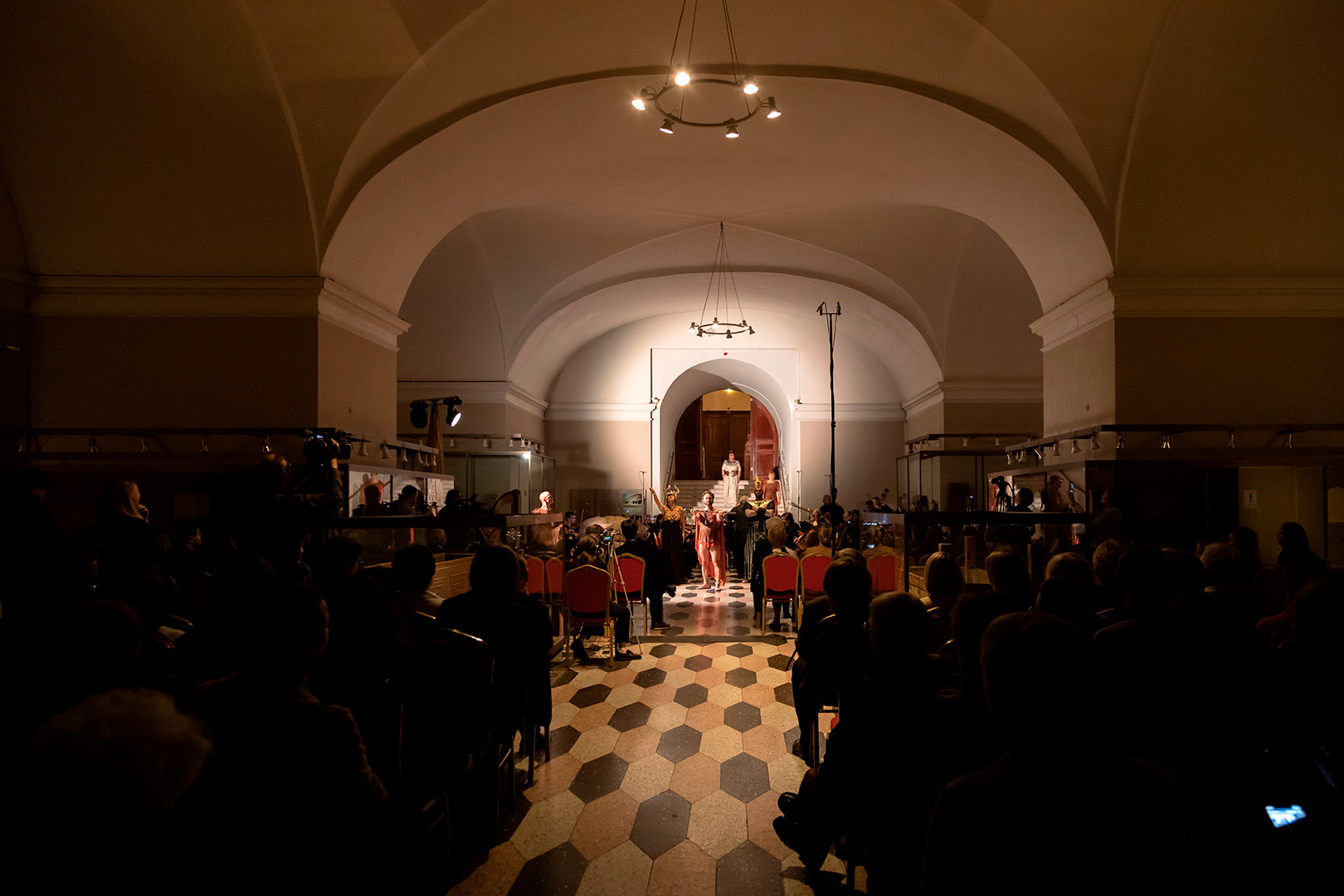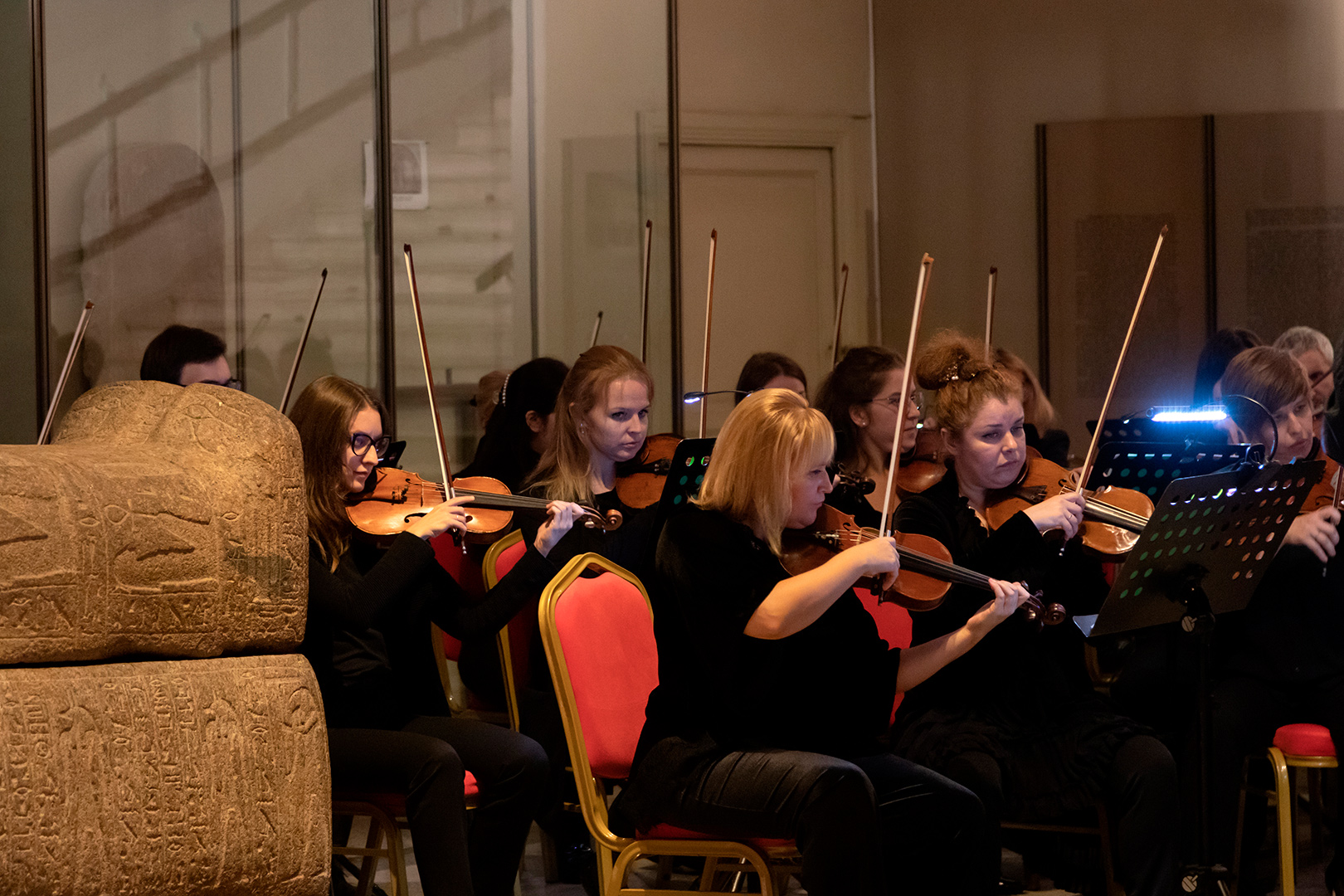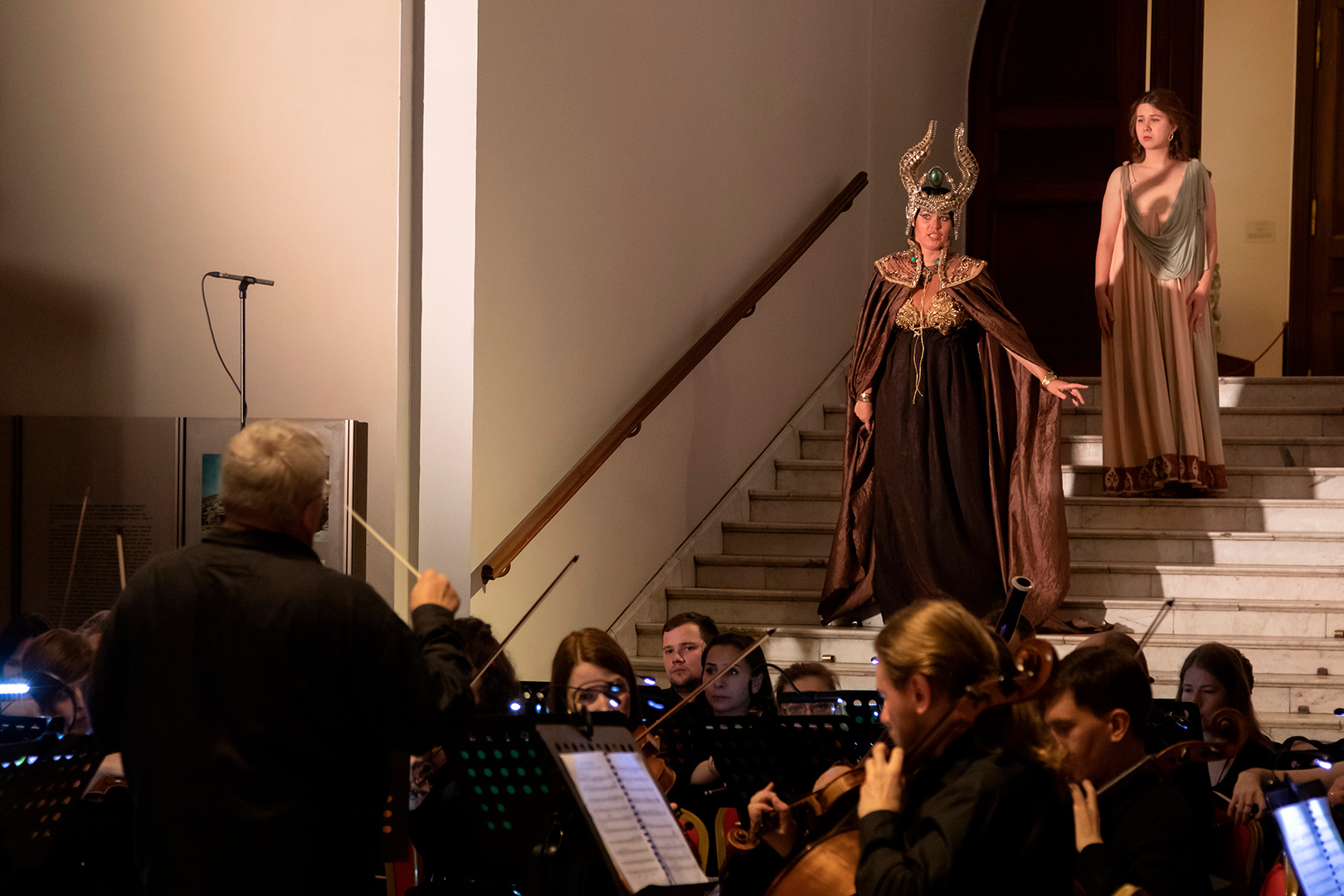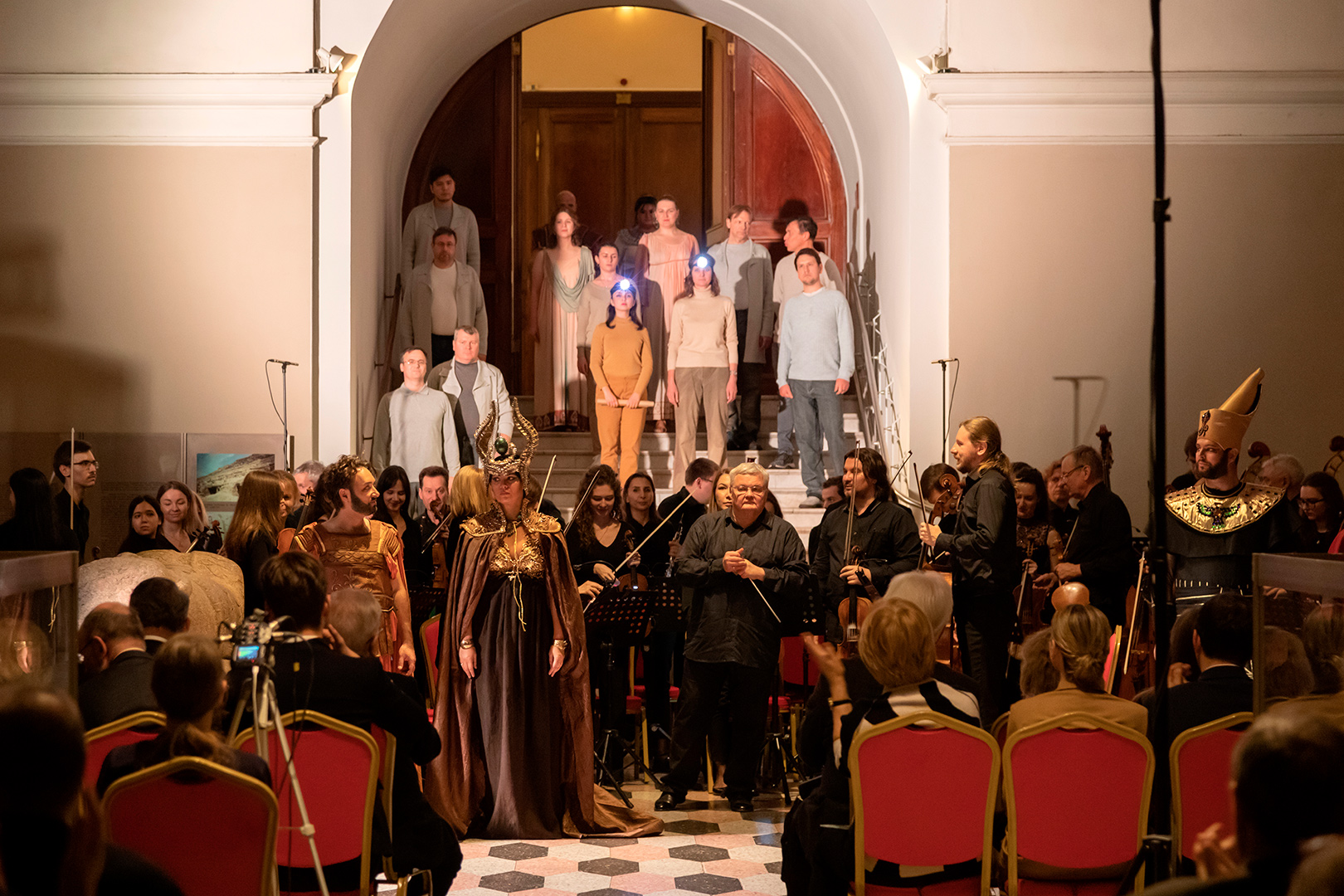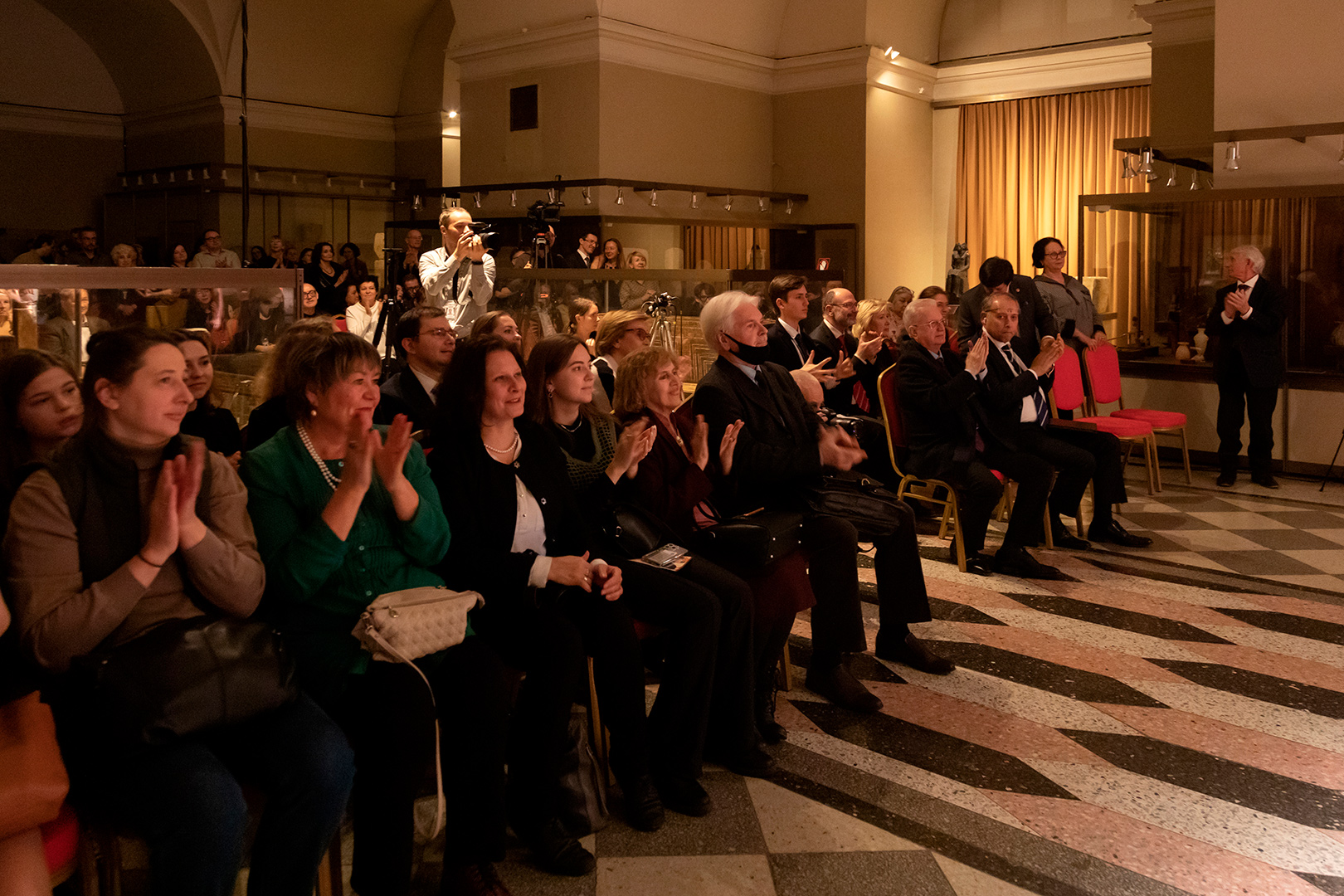Opening of the exhibition “Egyptomania. For the 200th Anniversary of the Decipherment of Egyptian Hieroglyphs by Jean-François Champollion”
- 1 / 20
- 2 / 20
- 3 / 20
- 4 / 20
- 5 / 20
- 6 / 20
- 7 / 20
- 8 / 20
- 9 / 20
- 10 / 20
- 11 / 20
- 12 / 20
- 13 / 20
- 14 / 20
- 15 / 20
- 16 / 20
- 17 / 20
- 18 / 20
- 19 / 20
- 20 / 20
On 27 October 2022, one of the main exhibitions of the season – “Egyptomania. For the 200th Anniversary of the Decipherment of Egyptian Hieroglyphs by Jean-François Champollion” – was formally opened in the Forehall of the Winter Palace. On show in two state rooms of the palace’s Neva Enfilade are more than 700 examples of the Egyptian style in all its variety: sculptures, paintings, furniture, glyptic works, jewellery and costumes.
“This exhibition is the result of major work not only by our own Department of the East, but also by the hundreds and thousands of people who have studied Egyptian culture over many years. Two hundred years ago Jean-François Champollion deciphered hieroglyphics, one hundred years ago Howard Carter discovered Tutankhamun’s tomb, and since then what we have called Egyptomania continues. Put simply, it is a love affair with Egypt. To give a more serious explanation, we are dealing with the mechanism of a dialogue of cultures and the way that Egypt’s ancient culture, which was known to varying degrees to the surrounding countries, gradually became a part of worldwide cultural heritage. Over time, it did change significantly, of course. You will see that as you go around the display from beginning to end. That, too, is one of the themes of modern-day researches and exhibitions: how the European image of Egypt was formed and to what extent it accords with the ancient and present-day Egyptians’ view of themselves. So, our exhibition is also highly topical,” Mikhail Borisovich Piotrovsky, General Director of the State Hermitage, said.
Also participating in the opening ceremony was Nazih El Naggary, Ambassador Extraordinary and Plenipotentiary of the Arab Republic of Egypt to the Russian Federation: “For me it is a great honour to be within the walls of the Hermitage today. Attention to antiquities has always been a distinguishing feature of this temple of culture. In 1940 the Egyptian Hall was opened, which enabled a large number of people to become acquainted with Ancient Egyptian culture. Today the Hermitage is opening a remarkable exhibition devoted to the 200th anniversary of the deciphering of the Egyptian writing system. Back then, following Jean-François Champollion’s discovery, the opportunity presented itself to delve deep into the study of an ancient civilization that back at the dawn of humanity brought the world science and art. I am certain that this exhibition will only fuel the interest and fondness of the wider public in Russia for Ancient Egyptian civilization,” he stated in his speech.
The exhibition aims to acquaint visitors with an exceptionally interesting phenomenon that has been termed Egyptomania since the late 18th century. Among the numerous varieties of historicism and orientalism, only the fascination with Ancient Egypt has earned the description of a mania. In contrast to the fairly short-lived vogues for Oriental exotica (such as Chinese art and the chinoiserie style to which that gave birth), Egyptomania has been incredibly long-lasting. Its roots go back to Ancient Greece and Rome, and so elements of this fascination have been present in European culture at all stages in its history. Another reason for the popularity is that Egyptomania is a universal phenomenon, embracing different sides of life: architecture, fine and applied art, philosophy and mysticism, literature theatre, cinema and even the simplest everyday objects. One more important idea of the exhibition is the insight that it was within the bounds of Egyptomania that the scholarly discipline of Egyptology slowly matured and eventually emerged.
Besides items from the stocks of the State Hermitage, the exhibition “Egyptomania. For the 200th Anniversary of the Decipherment of Egyptian Hieroglyphs by Jean-François Champollion” features exhibits from the All-Russian Pushkin Museum, State Museum of Urban Sculpture, Gatchina, Pavlovsk, Peterhof and Tsarskoye Selo State Museum-Preserves, State Russian Museum, Russian Academy of Sciences Peter the Great Museum of Anthropology and Ethnography (Kunstkamera), Kuskovo Estate Museum, Russian Academy of Arts (Saint Petersburg branch), National Library of Russia, Saint Petersburg State Theatrical Library, Saint Peterburg Mining University, Saint Petersburg State Museum of Theatre and Music, Saint Petersburg Palace of Culture of Education Workers (Yusupov Palace) and Central Naval Museum.
At the end of the evening, the Symphony Orchestra of Saint Petersburg conducted by People’s Artist of Russia Sergei Stadler performed excerpts from Giuseppe Verdi’s celebrated opera Aida in the Hall of Ancient Egypt. Before the concert began, Mikhail Piotrovsky said, “As is well known, Verdi was commissioned to write Aida for the opening of the Suez Canal, but he did not manage to complete it on time, and so it was Rigoletto, also by him, that was performed at the celebrations. It’s remarkable that today we are listening to Aida in the Hall of Ancient Egypt, while at the same time Rigoletto is being performed in the Hermitage Theatre. We have never had a combination like that before.”
The libretto for the opera was based on a legend from the times when Ancient Egypt was in conflict with Nubia (Ethiopia) that was related on a papyrus deciphered by the eminent French Egyptologist Auguste Mariette. At the heart of the plot, which the composer was also involved in developing, is the love story of the Ethiopian princess Aida. Fate led to her becoming a slave at the court of the pharaoh and gaining the heart of the Egyptian military commander Radames. Five passages from the opera were included in the concert.
The authors of the idea for the exhibition “Egyptomania. For the 200th Anniversary of the Decipherment of Egyptian Hieroglyphs by Jean-François Champollion” are Andrei Olegovich Bolshakov, head of the Sector of the Ancient East in the State Hermitage, and Andrei Nikolayevich Nikolayev, deputy head of the Department of the East and curator of the Exhibition.
The exhibition will run until 9 April 2023 and can be visited by all holders of tickets to the Main Museum Complex.
General sponsor of the exhibition – Rosneft
Profile media partners
